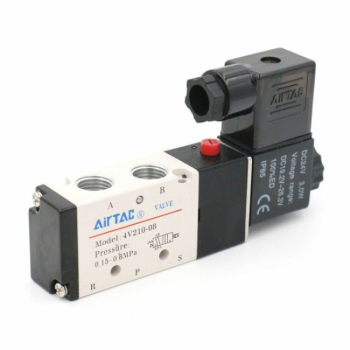Solenoid Valve: Which is better DC or AC Solenoid valve?

What is solenoid Valve?
The solenoid valve is basically a valve in the form of an electrical coil (or solenoid) and a plunger operated by a built-actuator. The valve is therefore opened and closed when the signal is removed by returning an electrical signal to its original position (generally by a spring).
Which is better DC or AC Solenoids?
Generally, DC solenoids are preferred to AC because a DC operation is not subject to original peak currents, which may cause overheating and coil harm with frequent cycling or accidental spool seizure.
However, where rapid response is needed or where relay-type electrical controls are used, AC solenoids are preferred.
The response time for AC solenoid valves is 8-5 μs compared to the typical 30-40 μs for DC solenoid operation.
Generally, DC solenoids are preferred to AC because a DC operation is not subject to original peak currents, which may cause overheating and coil harm with frequent cycling or accidental spool seizure.
The operating properties of a solenoid provided with DC and AC DC coils are significantly different in response time and can manage only small pressures.
In response time, AC coils are faster and can manage greater pressures at first.
They can therefore, if necessary, be cycled at quicker rates. However, electrical losses are greater and commensurate with the frequency of AC. (Power losses in an AC-operated solenoid with a frequency of 60 Hz, for example, are greater than that in a 50-Hz supply of the same coil).
Article from: https://automationforum.co/solenoid-valve-which-is-better-dc-or-ac-solenoid-valve/



